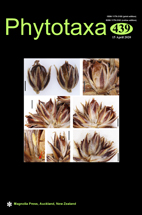Abstract
The pollen morphology of 40 Convolvulus L. taxa was examined using scanning electron microscopy. Of these, fourteen, including eight endemic to Iran, were studied in detail for the first time. Pollen was evaluated mainly for the following diagnostic characteristics: polar axis, equatorial axis, P/E ratio, pollen shape, colpi length, colpi width, type of tectum architecture, perforation diameter and number of perforations per unit area. Pollen is radially symmetrical, isopolar and tricolpate. The largest pollen belongs to C. armenus Boiss. & Kotschy ex Boiss. and C. persicus L, while C. leptocladus Boiss. has the smallest pollen. Pollen shape is polymorphic. However most species have subprolate and prolate-spheroidal pollen. The tectum is perforate (the most common), microreticulate or reticulate. Supratectal elements are present as granules more or less irregularly scattered over the whole surface. In the present study, pollen morphological characters were compared with previous results. C. persicus and C. leiocalycinus Boiss. have distinct pollen compared with other species from Iran. Although pollen characters alone are insufficient to reconstruct the taxonomic relationships within Convolvulus, palynological data can provide some useful information for species-level revisions.

